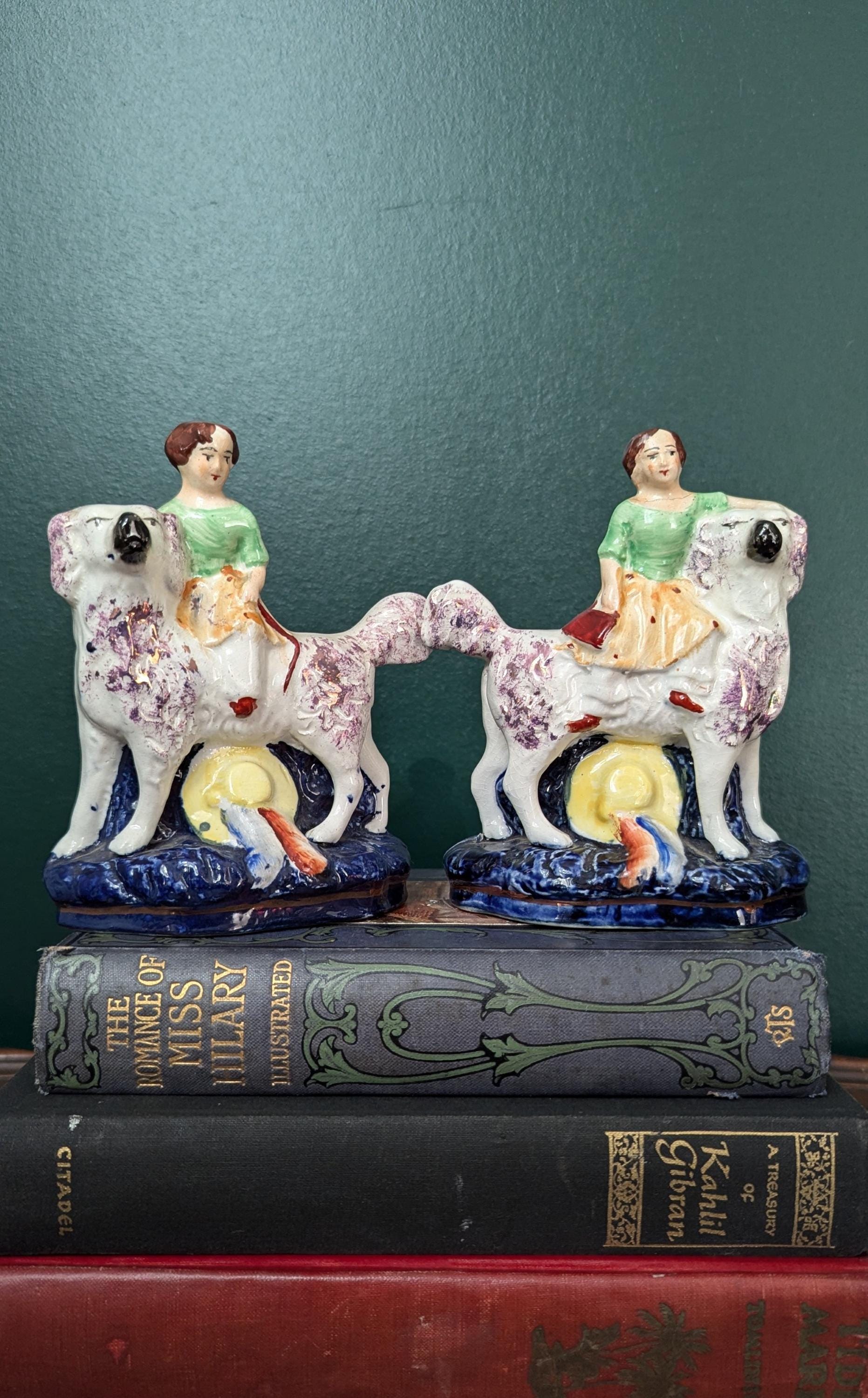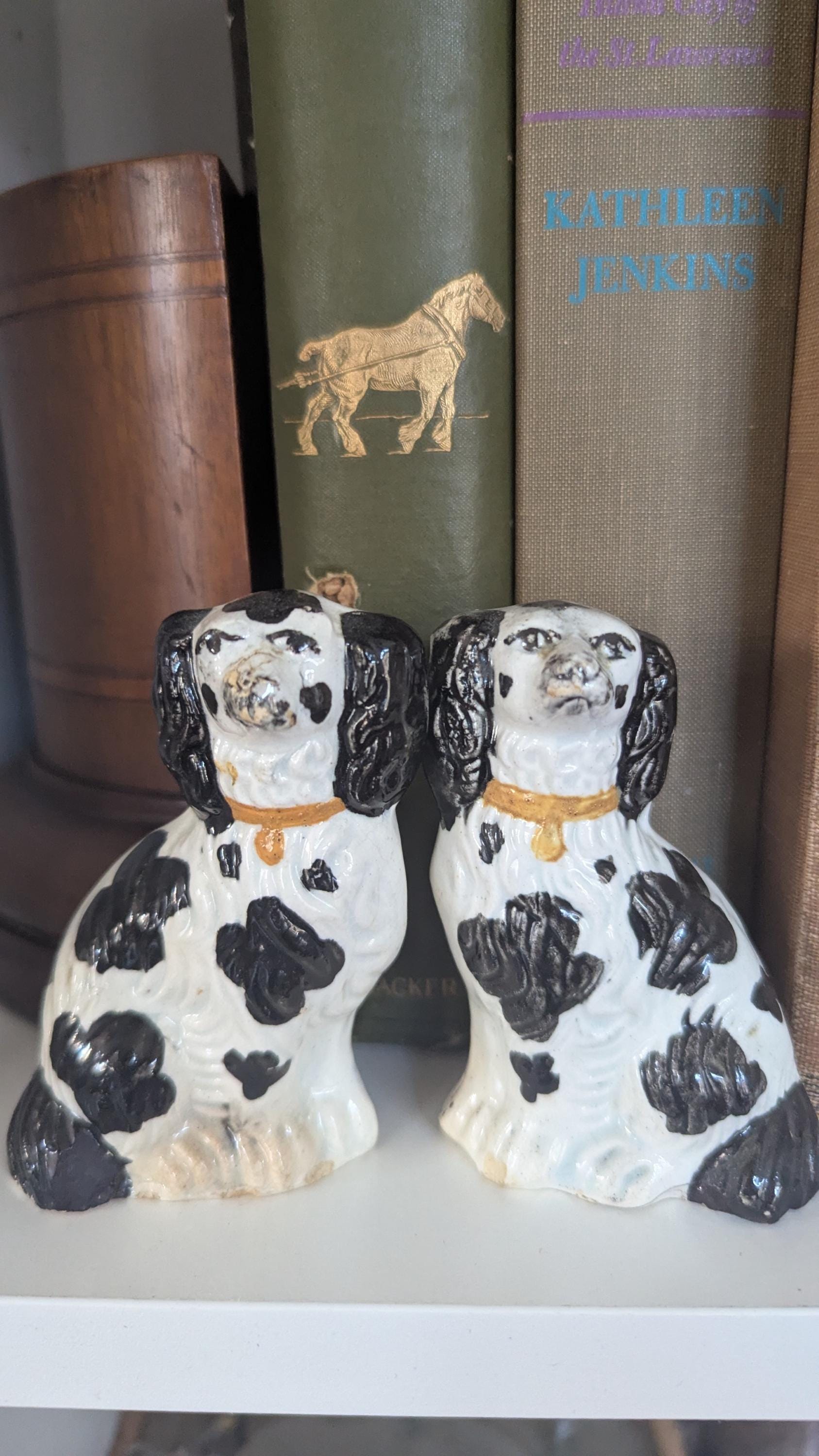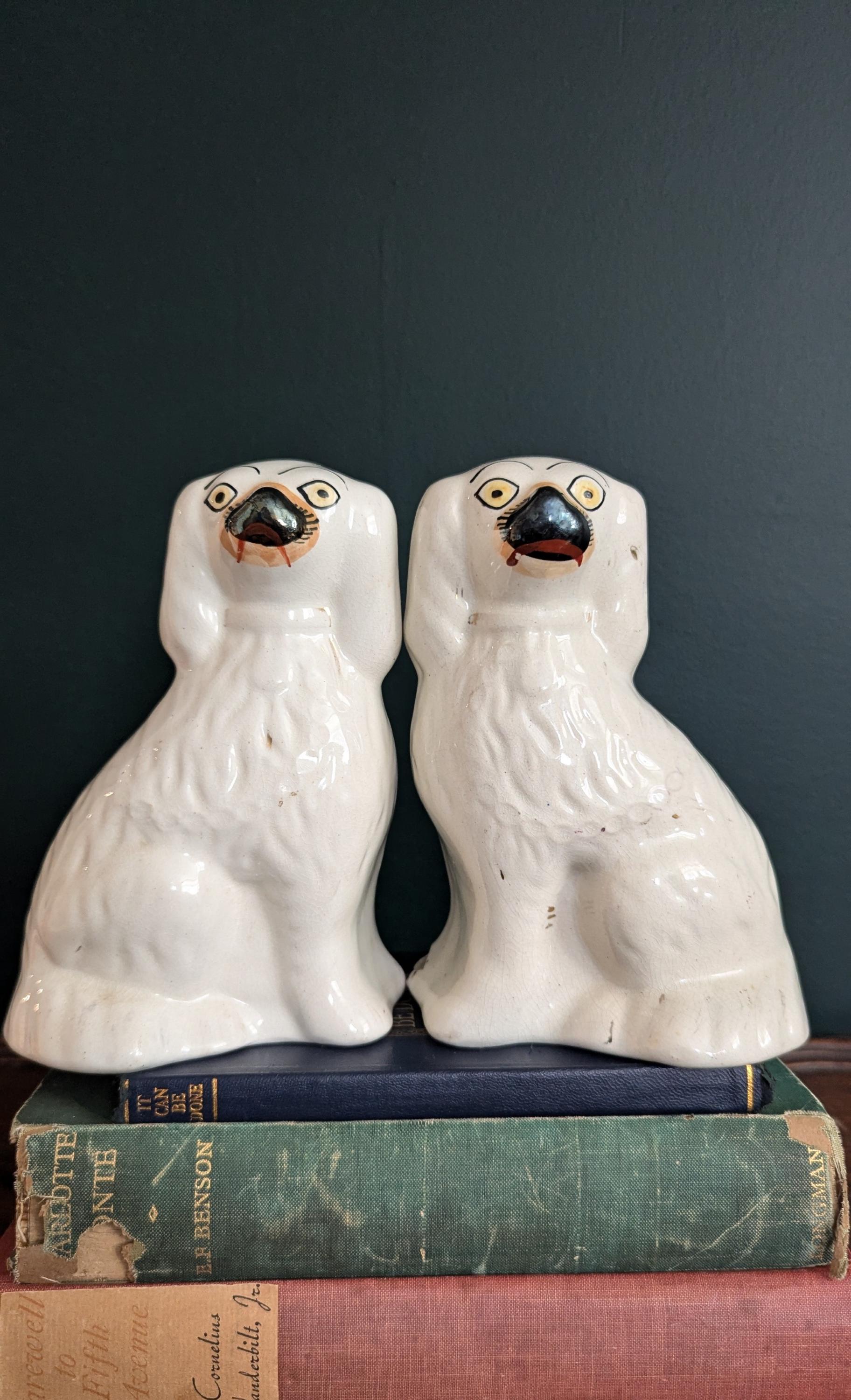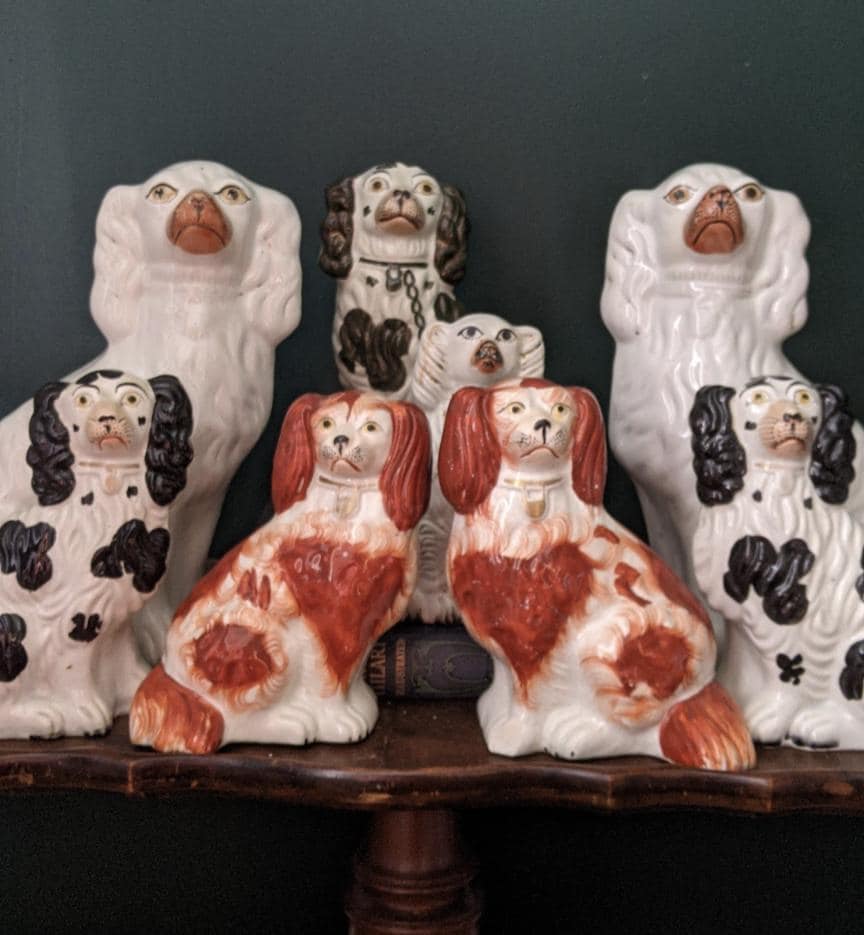***Dedicated to my Staffordshire girls, Mélissa, Lisa-Jean and Nathalie. And to my darling husband who has simply given up on having a boring beige home. ***
Blurring the lines between creepy and cute, these iconic mantlepiece stapples have been conversation starters since their early beginning in the late 18th century.
From funny looking Spaniels dogs to downright awful sheep, here is everything you need to know about Staffordshire.
A brief History:
Contrary to popular believe, Staffordshire pottery is not an actual brand but rather the name given the a multitude of smaller pottery businesses located in Staffordshire England ( about 150 miles northwest of London). Due to an abundance of clay, salt, lead and coal, this rural part of England became the home of some of the best-known factory such as: Wedgwood, Spode, Doulton, Moorcroft and Minton.
Three types of pottery were being produced: Earthenware, stoneware and porcelain. In fact they were the first to produce porcelain outside of China! While the pottery boom started in the early 1700, the early Victorian era saw a large increase in production with hundreds of small, mostly family owns companies. Unfortunately, a large part of the operations relied heavily on child labour.

The Staffordshire Dogs: From their humble beginning in the late 18th century, these figurines now sit at the top of many collectors’ list and can fetch a high price at auction. Often produced as a pair, these mantelpieces were massed produced and readily available to purchased from street vendors, country fairs and local potters. While the Cavalier King Charles remains a fan favourite, other breeds of dogs such as greyhounds and pugs were also quite popular at the time. ( See most collectible section for other types of Staffordshire figurines)

How to spot a fake:
Unlike other collectibles, looking for a specific marking at the bottom will not get you really far. In fact, most staffordshire doesn't have any marking.
Here are some actual clues to look for when shopping for a Stafforshire piece:
- Firing holes: Authentic 19th-century Staffordshire dogs often have one or two small holes. One under the base, the other in the hollow back area.
- Inspect the Craftsmanship and Paintwork: Authentic Staffordshire figurines are hand-painted with imperfections. The paint should have a somewhat rough, uneven texture, with small brushstrokes visible, especially around the eyes, nose, and fur of animals. Reproductions, especially mass-produced ones, may have overly smooth and uniform paintwork, with a very glossy finish. This can be a sign of modern techniques used in mass production.
- Paint quality: Genuine Staffordshire dogs might have slightly imperfect, thicker layers of paint that may have worn down over time. Fakes often have overly bright, shiny, or uniform colors.
- Look for Age and Wear: Authentic Staffordshire porcelain figures are typically well over 100 years old (most were made in the 19th century), so they should show signs of age and wear, especially around the feet or edges where they’ve been handled. You may notice crazing (small cracks in the glaze), small chips, or discoloration in the paint. These imperfections are signs of the piece being genuinely old and handled over the years. Fakes or modern reproductions may appear flawless or have no signs of age, which is a major red flag.
- Material and Weight: Authentic Staffordshire figures are made from earthenware or porcelain. They tend to be a little heavier than modern ceramics of similar size, as they were made with thicker, solid materials. Fakes may feel lighter and less substantial because they are often made with cheaper materials.
- Size and Pairing: Older Staffordshire dogs are typically about 8–12 inches tall. They were often produced in pairs, one male and one female, with certain poses being more common. While very similar they are never absolutely identical with the male being slightly taller. Meanwhile mass produced copy will be identical.

Most collectible:
Here are so special feature that may increase the value:
- Early pairs (pre-1850s)
- glass eyes
- separate front legs
- Unusual colors (e.g., black & white, blue, or tan) are more rare than common rust-red and white.
- Large sizes or oversized pairs are more desirable.
- Unique features like snarling mouths, extra detailing, or gilded collars
- Royal and Political Figures
- Figurines of Queen Victoria, Prince Albert, and other royals.
- Rare political figures like Napoleon, Duke of Wellington, or Benjamin Disraeli are highly collectible.
- Theatrical and Literary Characters Popular in Victorian homes.
- Characters from plays, novels, or pantomimes (e.g., Uncle Tom, Shakespearean characters, etc.)
- Crime and Curiosity Figures.Known as “death of” or murder figures — based on real 19th-century crimes. Example: The Death of Sarah Leigh, Dr. William Palmer, or Maria Marten and the Red Barn Murder.These are very rare and super collectible
- Religious and Pastoral Scenes
- Shepherds, milkmaids, farm animals.Often in groups, sometimes with lambs or cows.
- Animals (Other than Spaniels)
Cats, sheep, lions, deer, and exotic animals like zebras or elephants.Less common = more collectible.
- Watch Holders and Spill Vases
- Figures designed to hold pocket watches or vases.
Ready to buy your first Staffordshire? PLease note that we are constantly adding new models but they do tend to sell really fast so come often or follow us Instagram for exclusive preview (@RosewoodAntiquesMTL)
Check our current selection HERE
Need help identifying your great-aunt's collection? Send us a message:
info@rosewoodantiques.ca
